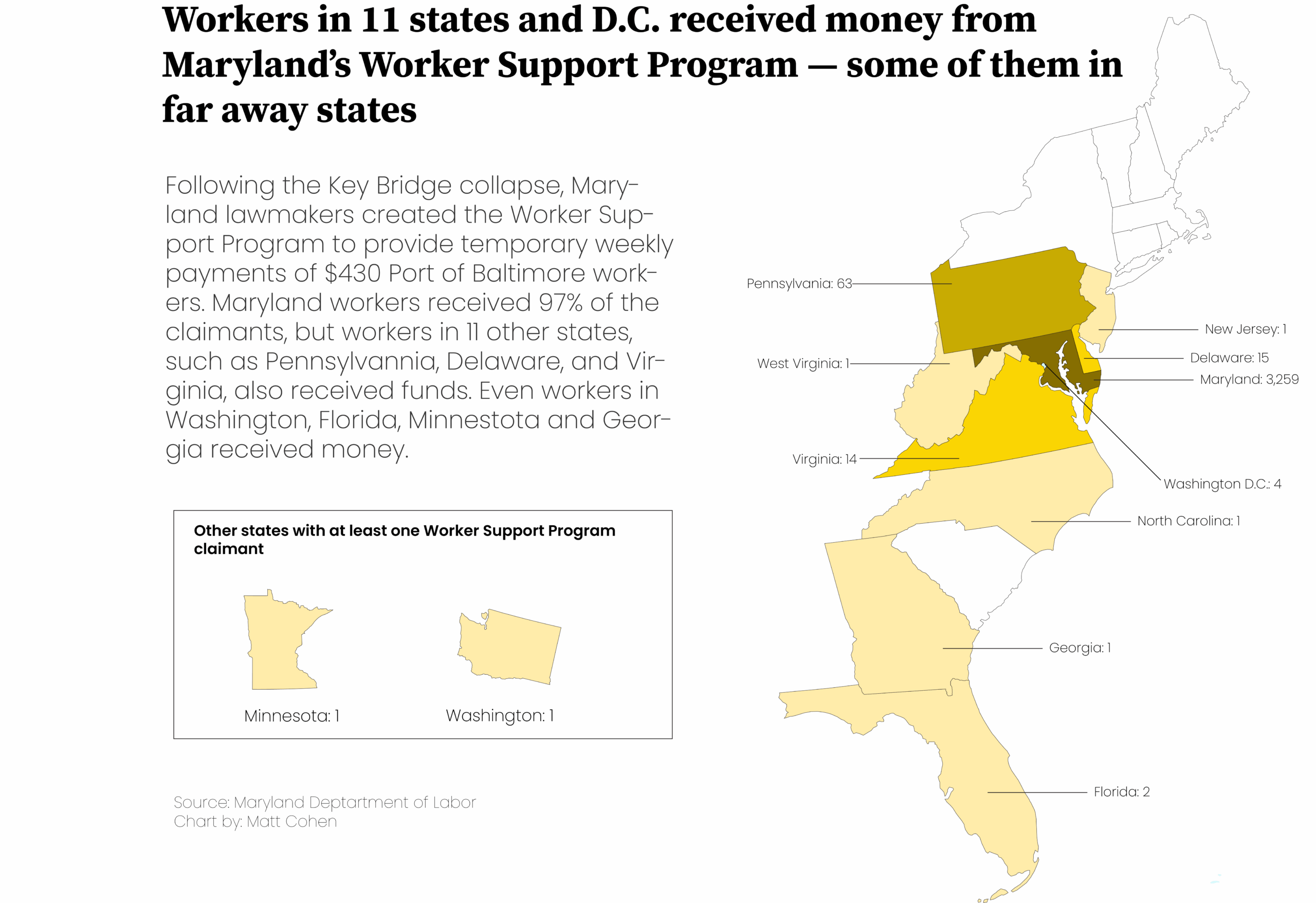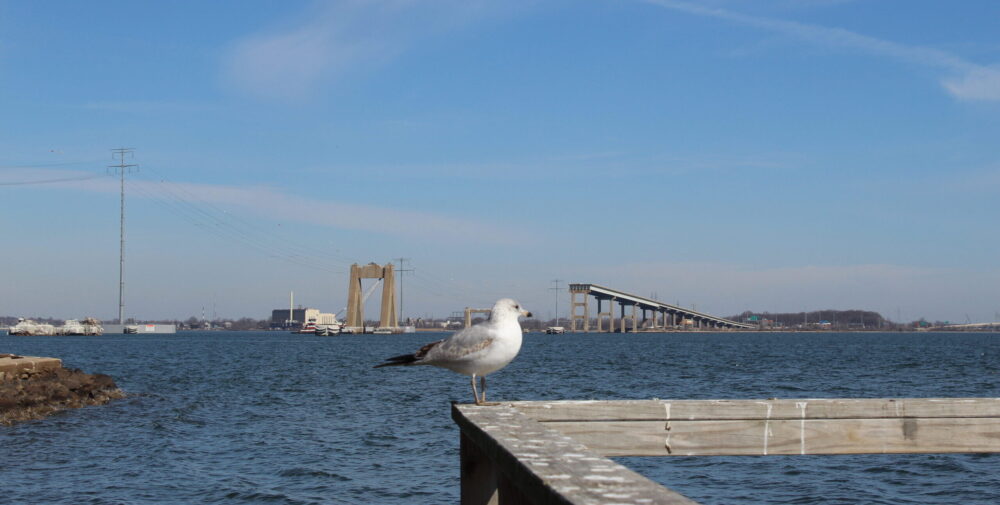BALTIMORE — Newly released data shows the Key Bridge collapse upended workers far beyond Baltimore, with people in Pennsylvania, Delaware, Virginia and beyond receiving emergency state relief funds after losing their jobs.

Capital News Service filed an open records request to the Maryland Department of Labor to learn about the distribution of state Worker Support Program funds. The records showed 3,363 approved applicants. Maryland residents made up 97% of the applicants. The zip codes for Dundalk (21222), Baltimore (21206), and Pasadena in Anne Arundel County (21122) had the three largest totals of claimants, respectively.
The next largest set of claimants came with home zip codes in nearby states such as Pennsylvania (63), Delaware (15), and Virginia (14).
“When you think about all of the individuals and the people who are reliant on the port or the activities surrounding the port for business, you quickly get a sense of the type of economic impact that that has,” Becky Eisen, communications director for the Baltimore Community Foundation, said. “Even though the port is now reopened, there has been a reverberation of impact in these communities.”
There were also a few workers in states like Washington, Florida, Georgia, and Minnesota. A Department of Labor spokesperson said all applicants were required to prove verification, and this could be due to several factors, including truckers with a distant home base or a temporary address in Maryland with a mailing address elsewhere.
Maryland Senator Johnny Ray Salling, R-Baltimore County, one of the PORT Act’s two sponsors, said he was “kind of surprised” that Worker Support Program funds reached so many states. As long as Maryland benefits, Salling said, he’s okay with it.
Included in the PORT Act — a bipartisan relief effort which provided some $34 million worth of grants and loans — Maryland set up the Worker Support Program, which was funding targeted at those who had lost income following the March 26, 2024, Key Bridge collapse and the ensuing port closure. Approved applicants could receive weekly $430 payments. The program stopped taking applications on June 28, 2024, and accepted applicants received payments for a maximum of 13 weeks.
The Maryland Port Administration estimates the port’s activity generates about 51,000 jobs, about 20,000 of which are directly working there. The port administration also estimates another 220,310 jobs that are at least related to port activity. That’s just within Maryland.
Experts have tied unemployment claims to the bridge collapse. Austin Wenck, Baltimore County’s manager of data analytics, said he counted 562 port-related unemployment insurance claims between March 26 and May 7, 2024. He said about 81% of them were related to transportation or material moving jobs.
Andrew Bauer, an economist and vice president for the Federal Reserve Bank of Richmond, said port-related job markets have largely stabilized. The port has consistently proven itself insulated from significant shortfalls because of its location and importance to international commerce, Bauer said. The port bounced back from the pandemic and the bridge collapse, and Bauer doesn’t expect the Trump administration’s tariffs to damage the port.
“The way that we do commerce is going to depend on a lot of things being shipped.” Bauer said. “I think all the ports are going to be an asset and their services are going to be in demand as a result.”
Those who received Worker Support Program money could also receive standard unemployment insurance benefits. Those claims spiked to their highest level of 2024, the week of the collapse.
Baltimore City, Baltimore County and Anne Arundel County dominated the communities with the most unemployment insurance claims between April 2024 and February 2025. In March 2024, Dundalk zip code 21222 had the most claims of any Maryland zip code.
Baltimore County data shows no industry was hit harder than transportation and warehousing — which are directly connected to the port. However, unemployment levels within the industry have generally returned to pre-collapse numbers.
The federal and state governments were not the only places people could turn for help.
The Baltimore Community Foundation was one of several philanthropic funding efforts in response to the collapse. The Baltimore Community Foundation raised at least $16 million for bridge-related relief.
The Baltimore Banner reported in early April that part of the money originally intended to go to families of the victims in the collapse was not delivered. Amid criticism, the Baltimore Community Foundation gave $1.2 million to victims’ families, the Banner reported.
Correction: Dundalk’s zip code was corrected to 21222.


You must be logged in to post a comment.